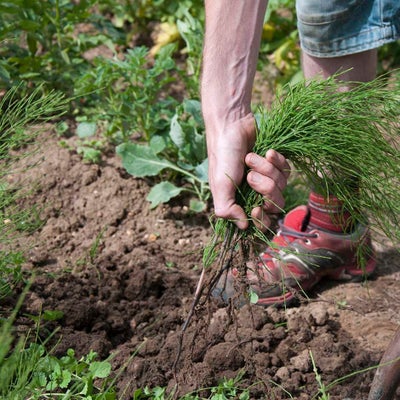
Quick facts
Weedkillers have a big environmental impact and the RHS encourages gardeners to use alternative, non-chemical control methods
You can control weeds by hoeing, hand weeding, repeated cutting, smothering and installing barriers
Late winter/early spring is a good time to install preventative measures; spring and summer are the main seasons for regular weeding
Annual weeds are generally quick and easy to remove; eradicating perennial weeds may require more time and effort
Non-chemical methods aren't just planet-friendly, they are safer to use around children and pets too.
Why choose non-chemical controls?
With some patience and persistence, all garden weeds (with the exception of Japanese knotweed) can be controlled using non-chemical methods, and there are plenty of other reasons to ditch the weedkiller:
- Weedkillers have a large carbon footprint from their manufacture, packaging and transportation.
- Surface and groundwater pollution is caused by weedkiller runoff, accidental spillages and incorrect disposal. This poses a significant threat to aquatic wildlife.
- Weedkillers can damage or kill garden plants if the wrong product is used or if applied incorrectly. See our page on weedkiller damage for more information.
- There are concerns that weedkillers pose a risk to human health, and research is ongoing into the long-term effects of exposure to these chemicals.
- Growing media can become contaminated by weedkillers. Clopyralid, an active ingredient in many selective lawn weedkillers, binds to grass and remains active in grass clippings. Adding these to a home bin and using the resulting compost can damage and distort garden plants. There have also been cases of damage by commercial potting composts, made using contaminated .
- Weedkillers can harm or kill garden wildlife, including invertebrates present on plants when they are treated, and those, like bees and other pollinators, that feed on treated plants. The loss of vegetation, flower resources and habitat cover through the use of weedkiller can also impact negatively on wildlife.
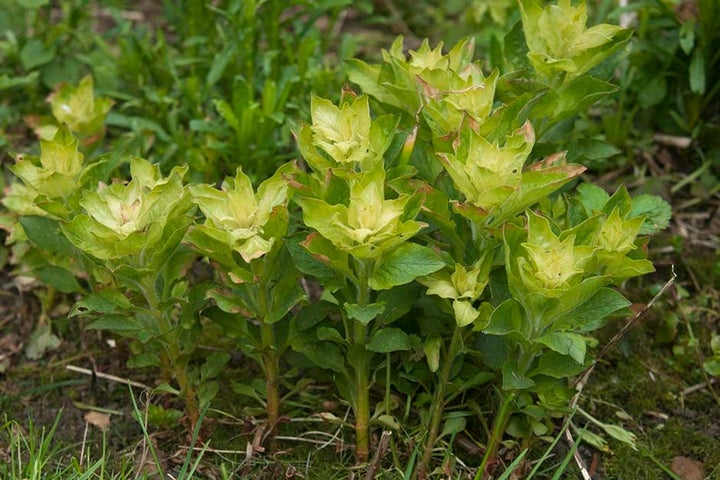
Did you know?
Weeds are simply plants growing where they aren’t wanted. The majority of our garden weeds are, in fact, UK native wildflowers that support a wide variety of garden wildlife. Taking a relaxed approach and allowing some to grow in your garden, for example in a species-rich lawn, wildlife corner or less-cultivated area, boosts its biodiversity and reduces your workload.
How to control weeds without chemicals
There are several ways to control weeds without using chemicals – getting good control depends on choosing the right method for the weeds in your garden. If you aren’t sure which weeds you have, take a look at our handy profiles on common weeds here. Alternatively, RHS members can send us photos for identification via MyRHS.
Annual weeds are generally shallow-rooted and easy to remove by hand. However, they often produce large quantities of seed, and therefore lots of , that require further control. The good news is that annual weed seedlings are easily smothered by or temporary weed fabrics.
weeds regrow each year and often have deeper, more extensive root systems. Removing the roots gives good control but isn’t always possible. Where it isn’t, regularly cutting back or smothering top growth weakens a plant and can eventually kill it. Weed barriers are useful for containing the spread of more pernicious perennial weeds.
Hand removal
Removing weeds by hand is generally quick and easy and can be done on empty beds ready for planting or on established ones. There are a few different options:
- Hoe off – run a hoe over a bed or between rows of plants to kill off most weed seedlings. For best results, do this on a warm, dry or windy day so exposed roots dry out quickly. removes weeds with minimal soil disturbance, helping to maintain soil health.
- Pull or fork out weeds – most annual weeds can be easily pulled from the soil by hand. To remove deeper rooted weeds, insert a hand fork to its full depth and lever out the .
- Use a weeding tool – there is a wide selection of specialist weeding tools on the market for tackling weeds in particular places. A weeding knife, for example, has a hooked end and is useful for weeding between paving slabs or along path edges. Forked ‘dandelion weeders’ and spiral-type tools are specifically designed to tackle weeds with a .
- Dig out large, established weeds – use a spade or border fork to dig out larger weeds that are well established in a border. Insert the tool to its full depth, close to the base of the plant, and lift out as much of the root system as possible.
Top Tip
Don’t add weed rhizomes, taproots, bulbs or seedheads to your home compost bin, as it may not reach high enough temperatures to kill them. Instead, put them in your council green waste recycling bin or take them to your local recycling site where they are composted at naturally high temperatures.
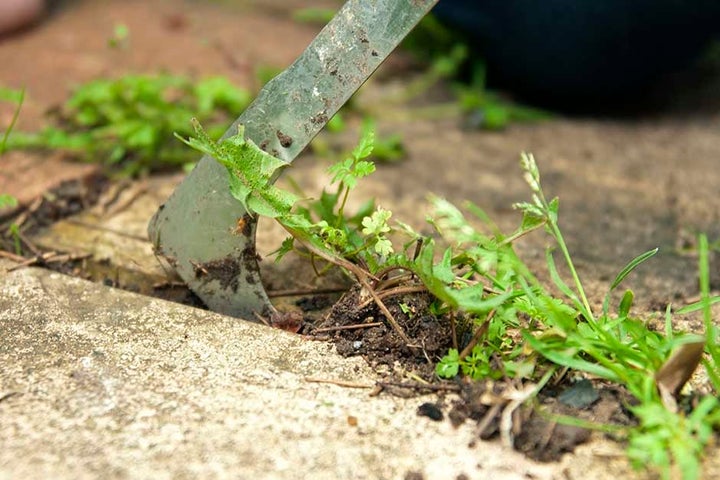
Repeated cutting
A good option where weeds grow through border plants or in difficult to reach places, repeated cutting prevents photosynthesis, using up a plant’s stored reserves. Done regularly over several years, these methods can kill off even the most persistent weeds:
- Cut back top growth regularly – weeds that are difficult to remove by hand, such as those with a deep or creeping , can be weakened by repeatedly removing any top growth during the growing season. Pull or cut leaves and stems to ground level as soon as they are seen.
- Strim off top growth – use a strimmer or brush cutter to regularly cut back weeds in larger areas.
- Mow regularly – control the vigour and spread of creeping lawn weeds, such as clover and speedwell, by mowing every 1-2 weeks during spring and summer. Rake those with creeping stems before mowing, so they are caught by the mower blades. Laying turf over an area containing persistent weeds, like ground elder and horsetail, and mowing it regularly, should eradicate them within a few years. Unlike smothering weeds with barriers, this method gives you usable space during the process.
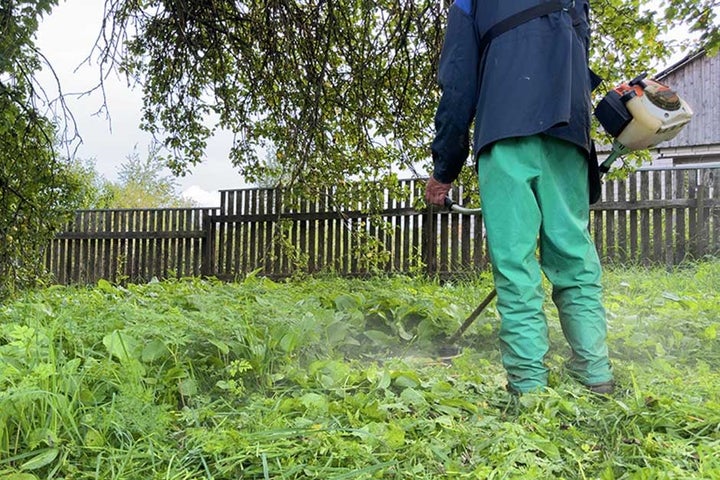
Smother weeds
As with repeated cutting, covering the soil weakens weeds and eventually kills them. Annual weeds may only need covering for a matter of months; weeds need covering for at least a few growing seasons. There are different materials and methods to choose from:
- Cover soil with cardboard – suppress annual weeds like chickweed and bittercress in empty veg and flower beds by covering soil over winter with a layer of cardboard. Large, deconstructed boxes with the tape removed work well, as only a few are needed to cover a bed. Ensure joins overlap and weigh the cardboard down with bricks or lengths of wood.
- with organic matter – cover soil with a 10-20cm (4-8in) thick layer of organic matter, such as or wood chips, to smother weeds growing in beds and borders. To stay effective, top-up the mulch layer each spring, following our advice in this handy guide. For control of pernicious weeds, apply mulch over a layer of cardboard. Take care to keep mulch away from woody stems and the crowns of herbaceous to prevent them rotting.
- Lay mulch film – made from corn starch, this alternative to black plastic membrane naturally degrades over time. Lighter grades are good for short-term weed control, for example of annual weeds in veg beds over winter, and last just a few months; heavier grades last up to three years, so can be used to supress perennial weeds.
- Fit biodegradable mulch mats – cover bare soil around the base of newly planted trees and shrubs to limit competition from weeds. Made from jute, these mats naturally degrade in around 18 months. For best results, secure in place with anchoring pegs. Rolls of jute matting are also available for hedge plantings and larger areas.
- Fill gaps in borders – plant mat-forming or groundcover plants to outcompete weeds and reduce weed seed . Fuller borders also benefit wildlife and make any weeds that do grow less noticeable.
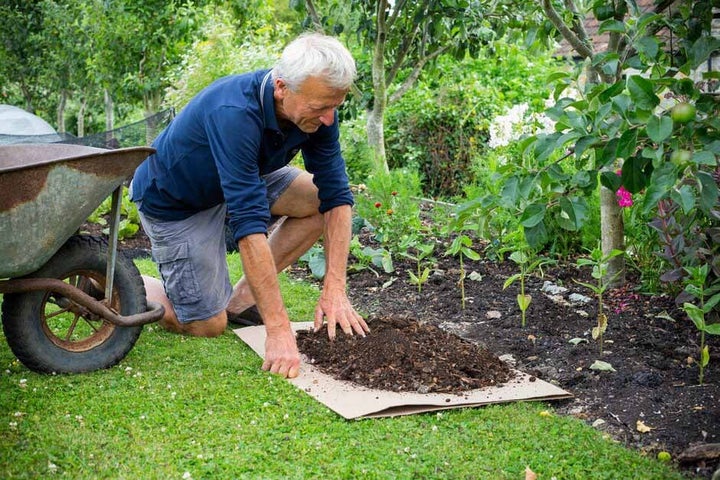
Choosing plastic alternatives
The RHS encourages gardeners to reduce their plastic use and choose biodegradable or recyclable alternatives, such as the corn starch and jute weed suppressant membranes described above. We also encourage gardeners to reuse plastic that they already have, extending the lifespan of items often regarded as single-use. Empty compost bags, for example, can be cut along one seam and used to cover beds for weed suppression. Used plastic weed membrane or pieces of pond liner can be similarly re-used and re-purposed. Just make sure that the material is intact before re-use, as worn plastic could release microplastics into the soil as it starts to degrade.
Weed barriers
Weed barriers contain weeds to a particular spot, restricting their spread. There are two main methods:
- Edge borders – well maintained lawn edges and edging strips help to prevent grass and lawn weeds creeping into borders. There are many different options for edging materials, from simple metal or wooden strips to more decorative options. For more advice, see our handy guides on creating and maintaining lawn edges.
- Insert a root barrier – restrict the spread of vigorous weeds, such as ground elder and horsetail, as well as potentially invasive garden plants like running bamboos, by confining their roots. Specialist root barrier fabrics are easiest to install and can be moulded to fit beds of any shape. Ensure edges overlap and joints are sealed using an appropriate mastic, and install so that the fabric protrudes at least 7.5cm (3in) above soil level. Alternatively, a straight barrier can be made using paving slabs or corrugated iron sheets.
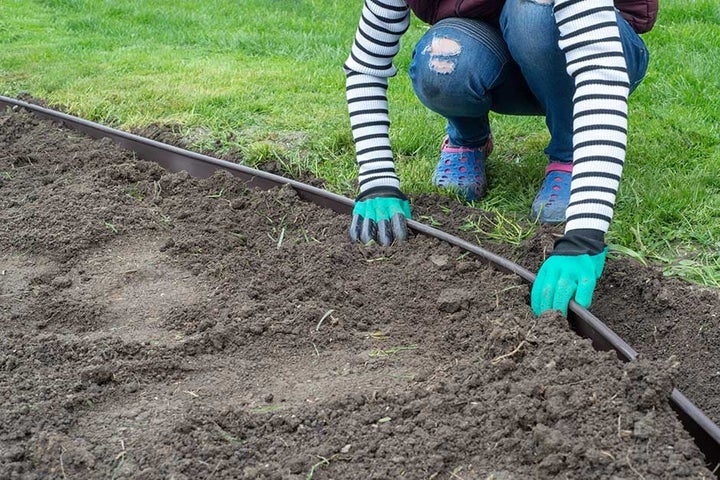
Will non-chemical control work?
With some patience and persistence, non-chemical methods can control almost all garden weeds. However, we acknowledge that when gardeners struggle to control weeds with cultural methods or where invasive weeds threaten biodiversity, targeted use of regulated weedkillers may be necessary. Garden centres and large retailers selling weedkillers have trained staff who can advise on suitable products for your needs. For more information, see our page on using chemicals in gardens.








